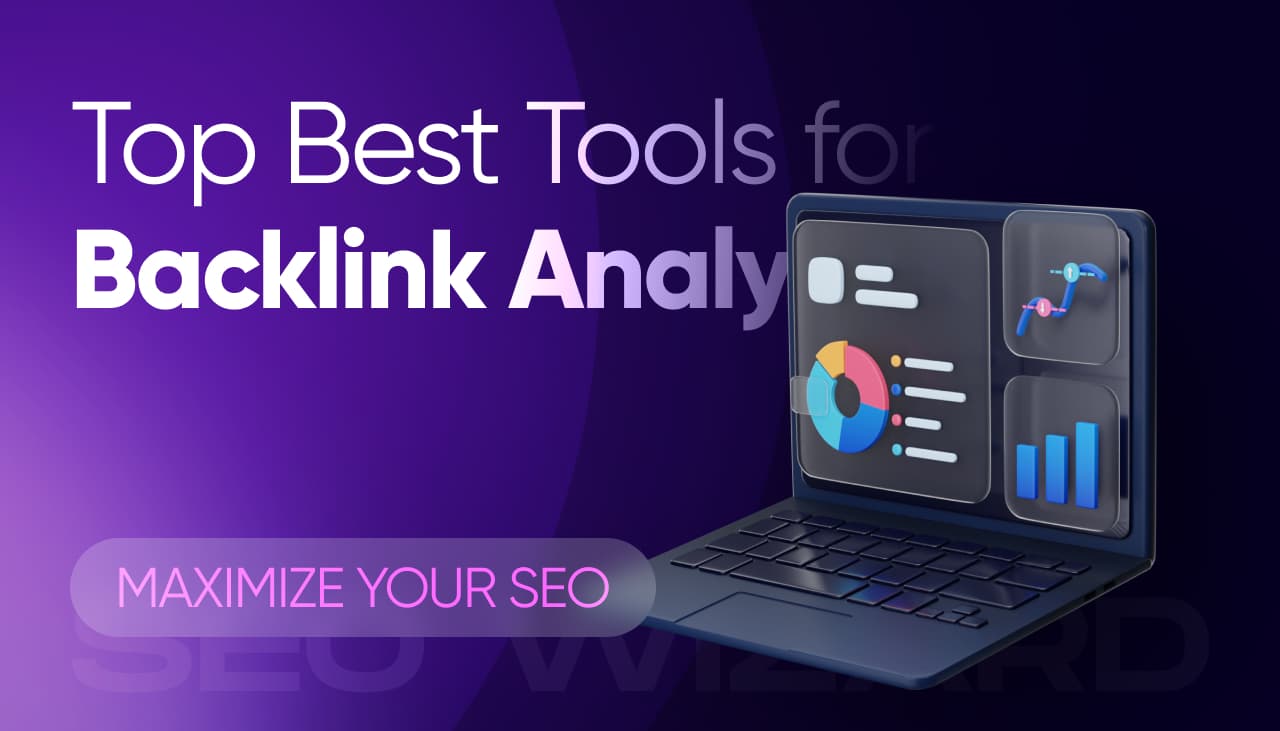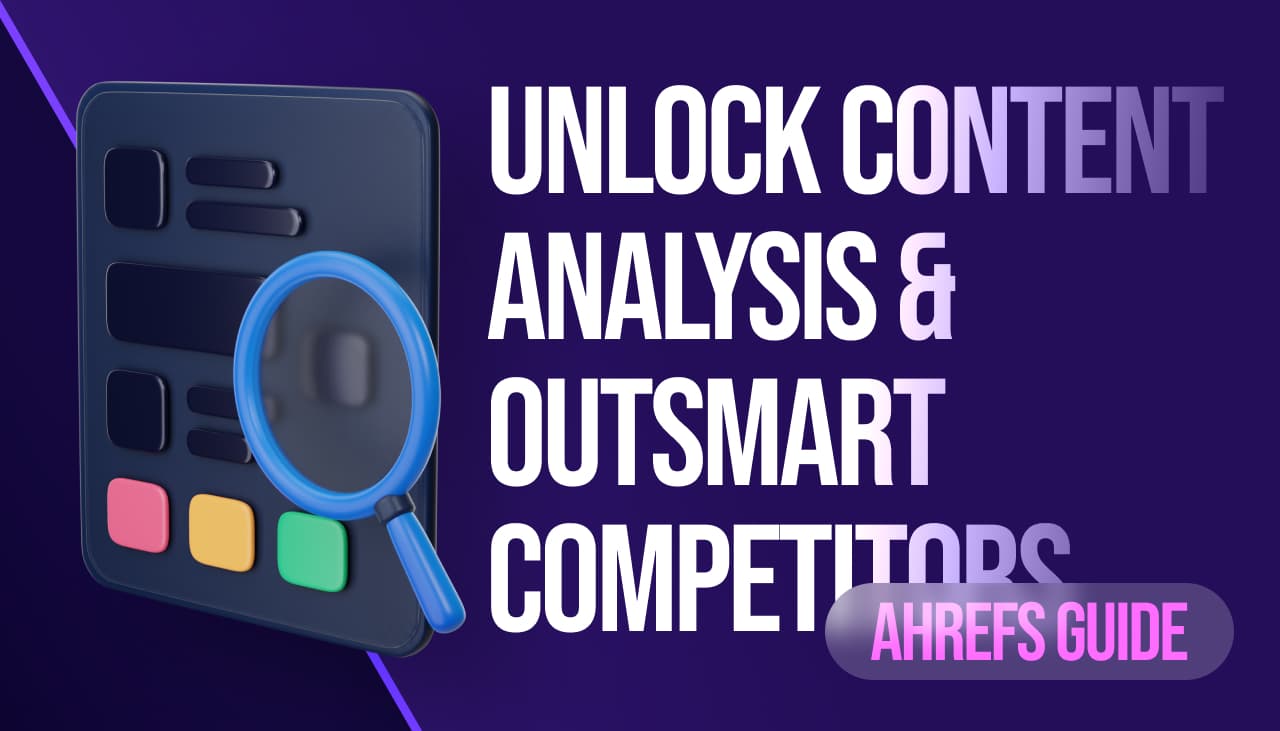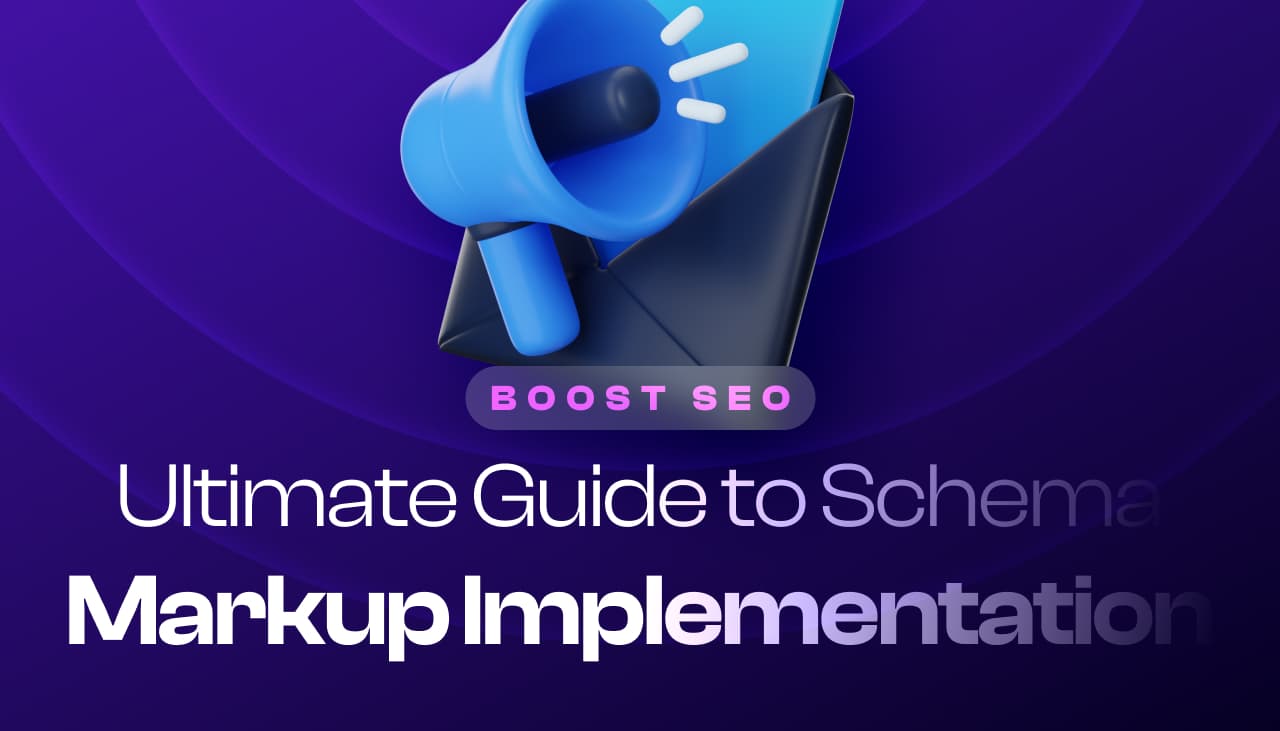In the vast ocean of SEO, backlinks are the lifeblood that fuels our website’s visibility and ranking. We understand how crucial it is to keep a close eye on these links, ensuring they’re not only abundant but also of high quality. That’s why we’re diving deep into the best tools for backlink analysis, tools that are essential for anyone looking to boost their site’s SEO performance.
Navigating the world of backlink analysis can be overwhelming, but it doesn’t have to be. With the right tools in our arsenal, we can uncover valuable insights, identify opportunities for growth, and keep an eye on the competition. Let’s explore the top tools that make backlink analysis a breeze, helping us to refine our strategies and achieve our SEO goals.
Table of Contents
Key Takeaways
- Backlinks are vital for SEO, acting as a vote of confidence that improves a website’s visibility and rankings; thus, choosing the right analysis tools is crucial.
- Tools like Ahrefs, Moz Pro, Semrush, Majestic, and SpyFu offer unique features and comprehensive data for effective backlink analysis, each with its own strengths in handling the challenges of backlink analysis.
- Key criteria for selecting a backlink analysis tool include data accuracy, ease of use, extensive web crawling, cost efficiency, and reliable customer support to guide decision-making and strategy refinement.
- Ahrefs stands out for its vast database and user-friendly interface, Moz Pro for its high-quality link index and proprietary Spam Score metric, Semrush for its holistic SEO management features, Majestic for its Trust Flow and Citation Flow metrics, and SpyFu for its competitor analysis capabilities.
- Effective backlink analysis tools can uncover valuable insights, identify growth opportunities, monitor competitors, and ensure the health of a website’s SEO profile, making them indispensable for any SEO strategy.
Understanding Backlinks and Their Importance
We’ve all heard that backlinks are crucial to SEO, but let’s delve deeper into why they hold such importance. Essentially, backlinks are a vote of confidence from one website to another. When a site links to ours, it’s saying, “We trust this content enough to recommend it.”
Search engines like Google see these votes and use them as a significant factor in determining our site’s quality and relevance. More quality backlinks mean a higher chance of ranking well in search results. It’s not just about quantity though.
The quality of the backlinks matters immensely. A link from a highly reputable site has more weight than one from a lesser-known blog. This distinction makes selecting the right places to gain backlinks from crucial for our SEO strategy.
Moreover, backlinks can bring direct traffic to our site. If someone clicks on a link from another site that leads to ours, that’s potential new visitors and possibly new customers.
Backlinks also help in indexing. They signal to search engines that our content is valuable and worth indexing quickly. This can speed up the process of our content appearing in search results.
Understanding the intricate role backlinks play in our website’s SEO and overall digital presence underlines the need for effective tools to analyze these links. Without proper analysis, we’re essentially flying blind, not knowing the full extent of our site’s potential or areas that need improvement.
By leveraging the top tools for backlink analysis, we can uncover a wealth of information that can guide our SEO strategy, from identifying the most valuable backlinks to spotting potential issues that could harm our ranking.
The Challenges of Backlink Analysis
When diving into backlink analysis, we’re faced with multiple challenges that can make or break our SEO efforts. Identifying and evaluating the quality of backlinks is no small task. Not all backlinks are created equal, and distinguishing between high-quality, relevant links and low-quality, potentially harmful ones requires a keen eye and deep understanding of SEO principles.
Another hurdle is the sheer volume of backlinks. Large websites can accumulate thousands, if not millions, of backlinks. Manually checking each link for relevance and quality isn’t just impractical; it’s nearly impossible. This is where we need advanced tools that can efficiently process and analyze backlink data at scale.
Detecting and disavowing spammy backlinks is crucial for maintaining our website’s health. Search engines penalize sites with too many low-quality links. We must vigilantly monitor our backlink profile and swiftly address any harmful links. However, determining which links to disavow requires expertise and sometimes a bit of guesswork.
Lastly, understanding the competitive landscape through backlink analysis demands continuous effort. We aren’t just examining our backlinks but also keeping an eye on our competitors’. This means constantly updating our strategies to not only maintain but also improve our backlink quality and quantity relative to others in our field.
These challenges underscore the importance of leveraging backlink analysis tools. The right tools can turn these daunting tasks into manageable, actionable insights.
Criteria for Choosing the Best Backlink Analysis Tools
When we dive into the vast sea of backlink analysis tools, it’s essential to have a compass—that is, a set of criteria to guide our choice. We’re looking for tools that not only serve our purpose but also empower us to refine our SEO strategies efficiently. Let’s break down these criteria to ensure we’re equipped to make the best decision.
Accuracy of Data is paramount. The last thing we want is to base our strategies on inaccurate or outdated information. We rely on these tools to provide us with the most current and precise backlink profiles possible.
Ease of Use can’t be overstated. A tool may be powerful, but if it’s not user-friendly, we’ll likely not use it to its full potential. We’re after tools that offer intuitive interfaces and straightforward reporting.
Coverage is another critical factor. The tool must crawl the web extensively and not just scratch the surface. We need a tool that uncovers backlinks from a wide array of sources, ensuring we don’t miss out on valuable insights.
Cost Efficiency is always on our minds. While we’re willing to invest in our tools, we must ensure we’re getting value for our money. A balance between cost and features is essential for our long-term strategy.
Finally, Customer Support and Community are indicators of a tool’s reliability. We look for tools backed by robust support teams and vibrant communities. This support network can be invaluable, especially when we’re navigating complex analysis or encountering unique challenges.
By keeping these criteria in mind, we’re better positioned to find backlink analysis tools that not only meet our current needs but also scale with our ambitions.
Tool 1: Ahrefs
When we’re talking about backlink analysis, Ahrefs stands out as a top contender. It’s recognized for its vast database of live backlinks, which makes it invaluable for SEO professionals. We’ve found that Ahrefs not only helps in identifying backlinks but also excels in finding broken links and opportunities for backlinking.
One of Ahrefs’ strengths is its user-friendly interface. It makes the complex task of analyzing backlinks much more manageable. We especially appreciate the detailed reports that offer insights into the health of our backlink profile. They allow us to make informed decisions quickly.
Another aspect where Ahrefs shines is in competitive analysis. By examining the backlink profiles of our competitors, we can identify gaps in our own strategy. This insight enables us to target new backlink opportunities that we might have otherwise missed.
Ahrefs also regularly updates its link database. This ensures that the information we’re working with is always current. We find this particularly crucial for monitoring and disavowing potentially harmful backlinks that can affect our site’s SEO health.
Cost efficiency is another critical factor. While Ahrefs is not the cheapest option available, its comprehensive features justify the investment. We’ve found that the data accuracy and the time saved in analysis provide a significant return on investment.
Lastly, Ahrefs offers excellent customer support. Whether we’re dealing with technical issues or have questions about best practices, the Ahrefs team has been consistently helpful. This level of support adds to the overall value of the tool for us.
In integrating Ahrefs into our SEO toolkit, we’ve seen tangible improvements in our strategy’s effectiveness. Its comprehensive feature set and reliable data make it a tool we’re likely to continue using for the foreseeable future.
Tool 2: Moz Pro
When exploring the realm of backlink analysis, Moz Pro emerges as a formidable competitor. It’s recognized for its comprehensive SEO toolset, designed to enhance search engine visibility and ranking. Moz Pro’s Link Explorer is a highlight, offering insightful backlink data. We’ve found it incredibly useful for dissecting the backbone of our website’s authority.
The platform prides itself on its high-quality link index, ensuring that we’re only getting the freshest and most relevant data. This is crucial because outdated information can lead us down the wrong path. Moz Pro’s ability to filter and sort backlinks simplifies identifying high-value link opportunities. It has proved instrumental in refining our link-building strategies.
Another standout feature is the Spam Score metric. This proprietary metric flags potentially harmful backlinks, a tool we’ve found invaluable in maintaining our site’s health. With Google’s algorithms becoming increasingly sophisticated, discerning between good and bad links is essential.
Competitor analysis is yet another area where Moz Pro shines. It allows us to peek into our competitors’ backlink profiles, offering us strategic insights. Understanding how and where competitors are gaining their backlinks gives us a competitive edge. We can identify gaps in our own strategy and opportunities for growth.
Moz Pro’s user interface is clean and intuitive, making it accessible for both beginners and experienced SEO professionals. This ease of use combined with powerful data analysis capabilities makes Moz Pro an integral part of our SEO toolkit.
Cost efficiency is a critical factor in choosing any SEO tool. Moz Pro offers various pricing tiers, making it a viable option for businesses of all sizes. Their customer support and resources are top-notch, providing us with guidance whenever we need it.
Tool 3: Semrush
When it comes to backlink analysis, Semrush stands out as a powerhouse. We’ve found it offers a holistic view on the quality and quantity of backlinks pointing to a website.
Its interface is intuitive, making it accessible even for beginners. We can conduct deep dives into backlink profiles with ease.
Semrush’s backlink audit feature is particularly notable. It enables us to identify potentially harmful backlinks swiftly. This capability is crucial for maintaining the health of our site’s SEO profile.
Another strong point is its competitor analysis feature. We can see where our competitors’ backlinks are coming from. This insight allows us to identify new opportunities for our backlink strategy.
The tool also boasts an extensive database. It’s updated regularly ensuring we have access to the latest backlink data.
Cost efficiency is another key advantage of Semrush. Providing a great balance between features and price. Making it a suitable option for businesses of all sizes.
One of Semrush’s standout features is its integration with other SEO functions. This allows us to manage various aspects of our SEO strategy in one place.
Customer support has proved exceptional. They’ve always been quick to resolve any issues we’ve encountered.
Semrush’s community is vibrant and helpful. Offering insights and tips that enhance our use of the tool.
In evaluating Semrush, its comprehensive features make it an indispensable tool. It streamlines the process of backlink analysis, saving us time and providing valuable insights.
Tool 4: Majestic
When diving into the world of backlink analysis, Majestic stands out for its unique features and extensive link intelligence database. It’s renowned for the volume and quality of data it offers, catering especially to SEO professionals and marketing analysts.
Majestic categorizes its backlinks into two main types: “Fresh Index” and “Historic Index”. The Fresh Index provides an up-to-date look at the backlinks, while the Historic Index offers a comprehensive historical view. This dual approach helps in understanding both current backlink profiles and their evolution over time.
One of Majestic’s standout features is the Trust Flow and Citation Flow metrics. Trust Flow measures the quality of backlinks pointing to a site, and Citation Flow indicates the volume. Together, these metrics offer a powerful insight into the health of your website’s backlink profile.
Moreover, Majestic offers a visual representation of backlink profiles through its Site Explorer tool. This makes it easier for us to analyze the backlink profile at a glance without delving into complex data. The visual aspect is particularly useful when explaining backlink strategies to clients or stakeholders.
The Link Context feature is another aspect where Majestic shines. It provides context around each backlink, such as the content surrounding the links and the types of websites linking back. Understanding the context is essential for assessing the relevance and quality of backlinks.
With a user-friendly interface, Majestic makes navigating through vast amounts of backlink data simpler. Whether you’re a novice or an expert in SEO, you’ll find the tools and metrics easy to use and understand.
In terms of cost efficiency, Majestic offers a range of pricing plans designed to suit various needs and budgets. Each plan comes with access to the core features, ensuring you don’t miss out on key functionalities regardless of the plan you choose. Plus, their customer support and community engagement are notable, providing help and insights whenever needed.
Tool 5: SpyFu
SpyFu is another essential tool we recommend for backlink analysis. Known for its prowess in competitor analysis, it also shines in the realm of backlinks. It allows us to delve deep into our competitors’ backlink strategies. This insight is invaluable for refining our approach.
One of SpyFu’s standout features is its ability to show us the most valuable backlinks that our competitors have. Not just that, but it also reveals the keywords they’re ranking for. This dual insight equips us with the knowledge to adjust our SEO strategy effectively.
With SpyFu, we can identify new backlink opportunities with ease. It provides detailed backlink reports that highlight potential sites for us to target. This streamlined approach saves us time and enhances our link-building efforts.
Accuracy and reliability of data are pillars that make SpyFu a go-to tool. It updates its data regularly, ensuring that we’re always working with the most current information available. This is crucial for maintaining an edge in our SEO initiatives.
Moreover, SpyFu offers a user-friendly interface that makes navigating its comprehensive features straightforward. Even those new to SEO can leverage SpyFu’s capabilities without a steep learning curve.
Its competitive analysis feature is particularly beneficial. It not only sheds light on competitors’ backlinks but also on their overall SEO strategy. This holistic view allows us to understand our competitive landscape better and tailor our strategies accordingly.
Budget-wise, SpyFu presents various plans to fit different needs and sizes. Whether we’re a small startup or a large enterprise, there’s an option that aligns with our budget and requirements. This flexibility is a key reason why SpyFu is among our top tools for backlink analysis.
Conclusion
We’ve navigated through the complexities of backlink analysis and the pivotal role advanced tools play in mastering it. By focusing on the indispensable need to sift through the vast oceans of backlinks and pinpointing the gems that bolster our SEO efforts, we’ve underscored the essence of leveraging top-notch tools like Majestic and SpyFu. These platforms not only simplify our quest for quality over quantity but also arm us with competitive insights that are crucial for strategic planning. As we continue to evolve in the ever-changing landscape of SEO, embracing these tools ensures we stay ahead of the curve, making informed decisions that drive our websites towards peak performance. Let’s harness the power of effective backlink analysis to unlock new heights of digital success.
Frequently Asked Questions
What are the main challenges of backlink analysis in SEO?
The main challenges include processing the large volume of backlinks, identifying and evaluating the quality of each backlink, and the need to detect and disavow spammy backlinks to maintain website health.
Why is backlink quality important?
Backlink quality is crucial because not all backlinks contribute the same value to your site’s SEO. High-quality backlinks from reputable sources can significantly boost your site’s ranking and authority, whereas poor-quality backlinks can harm your site’s SEO.
How can backlink analysis help understand the competitive landscape?
Backlink analysis provides insights into the backlink profiles of competitors, revealing their strategies, the quality of backlinks they are obtaining, and potential high-value link-building opportunities for your website.
What criteria should be considered when choosing a backlink analysis tool?
Consider accuracy of data, ease of use, coverage of the backlink landscape, cost efficiency, and the level of customer support and community engagement offered by the tool.
Why is Majestic a top contender for backlink analysis?
Majestic stands out due to its extensive link intelligence database, unique metrics like Trust Flow and Citation Flow, visual backlink profile representations, relevance assessment features, user-friendly interface, cost efficiency, and excellent customer support.
What makes SpyFu essential for backlink analysis?
SpyFu is essential for its prowess in competitor backlink analysis, showing valuable backlinks and keywords competitors rank for. It offers a user-friendly interface, regular data updates, and flexible pricing plans, making it valuable for strategic SEO planning.






















Responses (0 )